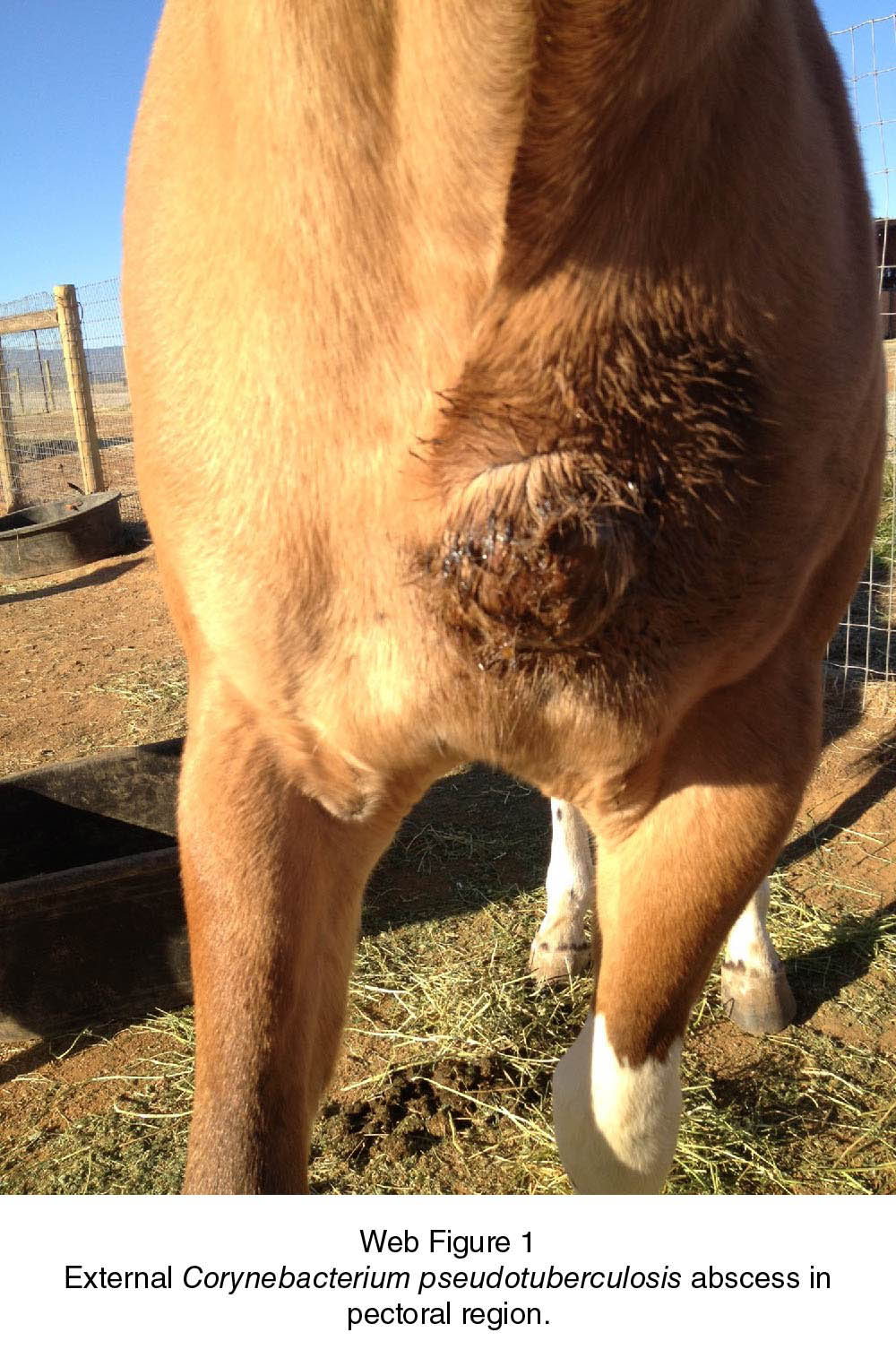- Definition
- Pathophysiology
- Systems Affected
- Incidence/Prevalence
- Geographic Distribution
- Signalment
- Signs
- Causes
- Risk Factors
Causes in order of frequency—(1) external abscesses, (2) internal infection, (3) ulcerative lymphangitis.
- Soil-borne, Gram-positive, pleomorphic, intracellular facultative anaerobic rod
- Likely transmitted by mechanical vectors (flies), horse-to-horse contact, and contaminated soil
- Portals of entry—traumatized mucous membranes or skin, including insect-induced ventral midline dermatitis
- Incubation time 3–4 weeks
- Exotoxin phospholipase D increases vascular permeability to promote spread of infection through tissue and lymphatics and causes local edema and pain. Internal abscesses result from hematogenous or lymphatic spread
- Most immunocompetent horses mount a strong immune response and have a single bout of infection
Endemic farms—sporadic. Naive populations—higher incidence. Mortality rate—<1% for external abscesses, 30–40% for internal infection.
All ages affected. Foals <6 months old are rarely affected, suggesting passive transfer of immunity when born to mares in endemic areas. No sex predilection.
- Historic cases on the property
- Edema of pectorals, axillae, ventrum, or inguinal area
- Progress to larger localized, painful and firm swellings in which small, multifocal abscesses develop
- Mature abscesses may have a palpable soft depression (Web Figure 1)

- Purulent material—thick, non-odorous, and tan
- Limb edema or lameness (triceps or inguinal areas)
- Variable signs of systemic inflammation/discomfort (fever, lethargy, anorexia, tachycardia)
- History of external abscess weeks prior
- Anorexia
- Lethargy
- Weight loss
- Fever
- Dependent edema
- Tachycardia
- Tachypnea, nasal discharge (respiratory disease)
- Abdominal discomfort
- Abnormal urination (urinary tract disease)
- Limb edema (cellulitis/lymphangitis)
- Multiple draining lesions
- Lameness
- Variable signs of systemic inflammation/discomfort
- Corynebacterium pseudotuberculosis biovar equi (nitrate reductase positive)
- Biovar ovis (nitrate negative) causes caseous lymphadenitis in small ruminants
- Natural cross-species transmission does not occur
 BASICS
BASICS
 DIAGNOSIS
DIAGNOSIS TREATMENT
TREATMENT MEDICATIONS
MEDICATIONS FOLLOW-UP
FOLLOW-UP MISCELLANEOUS
MISCELLANEOUS